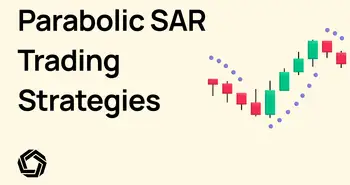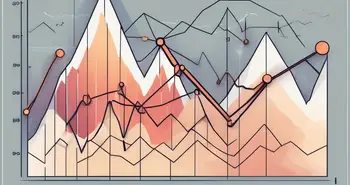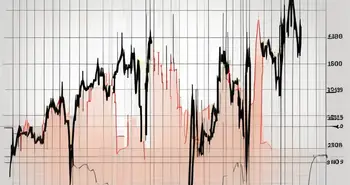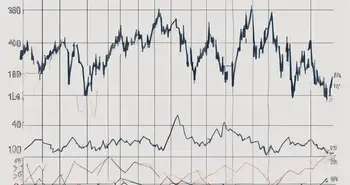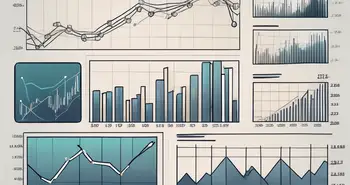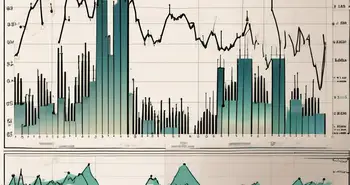The Parabolic SAR Indicator

As an experienced trader and expert in technical analysis, I am here to guide you through the intricacies of the Parabolic SAR indicator. Whether you are new to trading or a seasoned investor, understanding how this indicator works is crucial for making informed decisions in the market. In this comprehensive guide, we will delve into the origins, calculation process, interpretation, and practical applications of the Parabolic SAR indicator.
Introduction to the Parabolic SAR Indicator
Let's start by exploring the basics of the Parabolic SAR indicator. Developed by the legendary J. Welles Wilder Jr., this technical analysis tool aims to help traders identify potential reversals in a market trend. The Parabolic SAR, short for Stop and Reverse, is plotted on a price chart using small dots that suggest potential turning points.
Origin and Development of the Parabolic SAR Indicator
The Parabolic SAR indicator was introduced by Wilder in 1978 and gained popularity due to its simplicity and effectiveness. Wilder, a renowned technical analyst, designed this indicator to assist traders in maximizing their profits during trending markets. By providing clear stop and reverse signals, the Parabolic SAR indicator allows traders to identify potential entry and exit points with ease.
Wilder's inspiration for the Parabolic SAR indicator came from the concept of acceleration. He believed that as a trend gains momentum, its rate of change accelerates. This insight led him to develop an indicator that could dynamically adjust its sensitivity to changes in the market, allowing traders to ride the trend while also being alerted to potential reversals.
Wilder's extensive research and testing led to the creation of the Parabolic SAR formula, which calculates the dots that appear on the price chart. The formula takes into account the current price, the acceleration factor, and the previous SAR value. By continuously updating the SAR value, the indicator adapts to changes in the market, providing traders with timely signals.
Basic Concept and Functionality
The Parabolic SAR relies on two main factors: price and time. This indicator calculates a series of dots above or below the price chart, representing potential stop and reverse levels. When the price is above the dots, it suggests a downtrend, while prices below the dots indicate an uptrend. The closer the price to the dots, the higher the potential strength of the trend reversal.
One of the key features of the Parabolic SAR indicator is its ability to dynamically adjust the acceleration factor. The acceleration factor determines the rate at which the SAR value moves closer to the price. As the trend gains momentum, the acceleration factor increases, allowing the SAR value to catch up with the price more quickly. This feature helps traders stay in a trend for as long as possible, maximizing their profits.
However, it's important to note that the Parabolic SAR indicator is not infallible. Like any technical analysis tool, it has its limitations and can generate false signals. Traders should use the Parabolic SAR in conjunction with other indicators and analysis techniques to validate its signals and make informed trading decisions.
In conclusion, the Parabolic SAR indicator is a powerful tool that can assist traders in identifying potential reversals in a market trend. Developed by J. Welles Wilder Jr., this indicator has stood the test of time and remains widely used by traders around the world. By understanding its origin, development, and functionality, traders can harness the power of the Parabolic SAR to enhance their trading strategies.
The Mathematical Formula Behind Parabolic SAR
Now, let's dive into the mathematical formula that lies behind the Parabolic SAR calculation.
The Parabolic SAR (Stop and Reverse) is a technical analysis indicator used to determine potential reversal points in a market trend. It was developed by J. Welles Wilder Jr. and first introduced in his book, “New Concepts in Technical Trading Systems.”
The Parabolic SAR formula is quite straightforward. It is based on the previous period's SAR value, acceleration factor (AF), and the highest high or lowest low of the previous period. By applying a fixed incremental value to the AF, the indicator adjusts itself according to the market's volatility.
The calculation process begins with the first SAR value, which is usually assumed to be the highest high or lowest low of the initial period. From there, the SAR value is updated for each subsequent period based on the formula:
SAR(n) = SAR(n-1) + AF(n-1) * (EP(n-1) – SAR(n-1))
Where:
- SAR(n) is the SAR value for the current period
- SAR(n-1) is the SAR value for the previous period
- AF(n-1) is the acceleration factor for the previous period
- EP(n-1) is the extreme price (highest high or lowest low) of the previous period
The acceleration factor (AF) is a key variable in the Parabolic SAR formula. It determines the rate at which the SAR dots accelerate. Initially, the AF is set to a small value, such as 0.02, and then it gradually increases by the same fixed increment (usually 0.02) for each subsequent period until it reaches a predetermined maximum value.
The extreme price is another crucial variable in the Parabolic SAR formula. It represents the highest high or lowest low of the previous period and is used to calculate the SAR value for the current period. If the market is in an uptrend, the extreme price is the highest high, and if the market is in a downtrend, the extreme price is the lowest low.
By continuously recalculating the SAR value for each period, the Parabolic SAR indicator forms a series of dots above or below the price chart, indicating potential reversal points. When the price crosses the SAR dots, it suggests a trend reversal may be imminent.
It's important to note that the Parabolic SAR is most effective in trending markets and may generate false signals in choppy or sideways markets.
Key Variables in the Parabolic SAR Formula
The Parabolic SAR formula relies on two essential variables: the acceleration factor (AF) and the extreme price.
The acceleration factor (AF) determines the rate of acceleration for the SAR dots. As mentioned earlier, it starts with a small value and gradually increases by a fixed increment for each subsequent period. The AF essentially controls how quickly the SAR dots catch up to the price movement.
The extreme price represents the highest high or lowest low of the previous period. It is used to calculate the SAR value for the current period. In an uptrend, the extreme price is the highest high, while in a downtrend, it is the lowest low. The extreme price helps determine the proximity of the SAR dots to the price action.
By incorporating these key variables into the Parabolic SAR formula, traders can gain insights into potential trend reversals and make more informed trading decisions.
Interpreting the Parabolic SAR Indicator
Understanding how to interpret the Parabolic SAR indicator is vital for successful trading. Let's explore the key factors to consider when analyzing its signals.
Recognizing Bullish and Bearish Signals
When the dots are below the price chart, it signifies a bullish trend, suggesting that it is an opportune time to enter a long position. Conversely, when the dots are above the price chart, it indicates a bearish trend, signaling a potential time to sell or consider short positions. It's important to note that the Parabolic SAR is not designed for sideways or ranging markets.
Understanding Whipsaws and False Signals
While the Parabolic SAR provides valuable indications of trend reversals, it is not infallible. One common pitfall is known as a whipsaw, where the indicator generates false signals during choppy market conditions. During these periods, it is advisable to rely on additional confirmation signals to increase the accuracy of your trades.
The Role of Parabolic SAR in Trading Strategies
Now that you understand the basics of the Parabolic SAR indicator, let's explore its practical applications within different trading strategies.
Combining Parabolic SAR with Other Indicators
The Parabolic SAR works well when combined with other technical indicators such as moving averages or the Relative Strength Index (RSI). By utilizing multiple indicators, traders can strengthen their decision-making process and validate potential trade setups.
Using Parabolic SAR in Trend Following Strategies
The Parabolic SAR is particularly useful for trend followers who aim to ride the market's momentum. By entering positions that align with the indicator's signals, traders can capitalize on potential long-term trends and maximize their profits.
Limitations and Risks of Using the Parabolic SAR Indicator
Although the Parabolic SAR is a valuable tool, it is important to acknowledge its limitations and associated risks.
Market Conditions Affecting the Indicator's Accuracy
The Parabolic SAR's accuracy can be compromised during periods of low volatility or when a market is experiencing extended periods of consolidation. It is crucial to consider the prevailing market conditions, as these factors greatly influence the indicator's reliability.
Overcoming the Limitations: Tips for Traders
One way to mitigate the limitations of the Parabolic SAR indicator is to use it in conjunction with other technical analysis tools. By cross-referencing signals from different indicators, traders can reduce the risk of false signals and improve their overall trading performance.
Frequently Asked Questions (FAQ)
What is the Parabolic SAR indicator?
The Parabolic SAR indicator is a technical analysis tool that helps traders identify potential trend reversals. It provides stop and reverse signals, allowing traders to time their entry and exit points. The indicator uses dots plotted on a price chart to signify potential turning points.
How is the Parabolic SAR calculated?
The Parabolic SAR is calculated using the previous period's SAR value, the acceleration factor (AF), and the highest high or lowest low of the previous period. The AF determines the rate of acceleration for the SAR dots, allowing the indicator to adapt to changing market conditions.
Can the Parabolic SAR be used in different trading strategies?
Absolutely! The Parabolic SAR can be used in various trading strategies, such as trend following or combining it with other technical indicators. By incorporating the Parabolic SAR into your trading approach, you can enhance your decision-making process and potentially improve the profitability of your trades.
What are the limitations of the Parabolic SAR indicator?
One major limitation of the Parabolic SAR is its vulnerability to providing false signals during choppy or range-bound market conditions. Additionally, the indicator's accuracy can be affected by market volatility. It is crucial to consider these limitations and use additional confirmation signals to increase the reliability of your trades.
By understanding the intricacies of the Parabolic SAR indicator, you will be equipped with a powerful tool to enhance your trading decisions. Remember to consider the indicator's signals in the broader context of market conditions and use additional technical analysis tools for confirmation. Happy trading!
Ready to apply your knowledge of the Parabolic SAR indicator in real-time trading? Join Morpher, the revolutionary trading platform that leverages blockchain technology for a seamless investing experience. With Morpher, you can trade a vast array of assets, from stocks and cryptocurrencies to unique markets, all with zero fees and infinite liquidity. Embrace the power of fractional investing, short selling, and up to 10x leverage to maximize your trading strategies. Sign up now and take control of your investments with the safety and innovation that Morpher offers. Sign Up and Get Your Free Sign Up Bonus to start your journey with a platform that's as dynamic as the markets you trade.

Disclaimer: All investments involve risk, and the past performance of a security, industry, sector, market, financial product, trading strategy, or individual’s trading does not guarantee future results or returns. Investors are fully responsible for any investment decisions they make. Such decisions should be based solely on an evaluation of their financial circumstances, investment objectives, risk tolerance, and liquidity needs. This post does not constitute investment advice.

Painless trading for everyone
Hundreds of markets all in one place - Apple, Bitcoin, Gold, Watches, NFTs, Sneakers and so much more.

Painless trading for everyone
Hundreds of markets all in one place - Apple, Bitcoin, Gold, Watches, NFTs, Sneakers and so much more.

